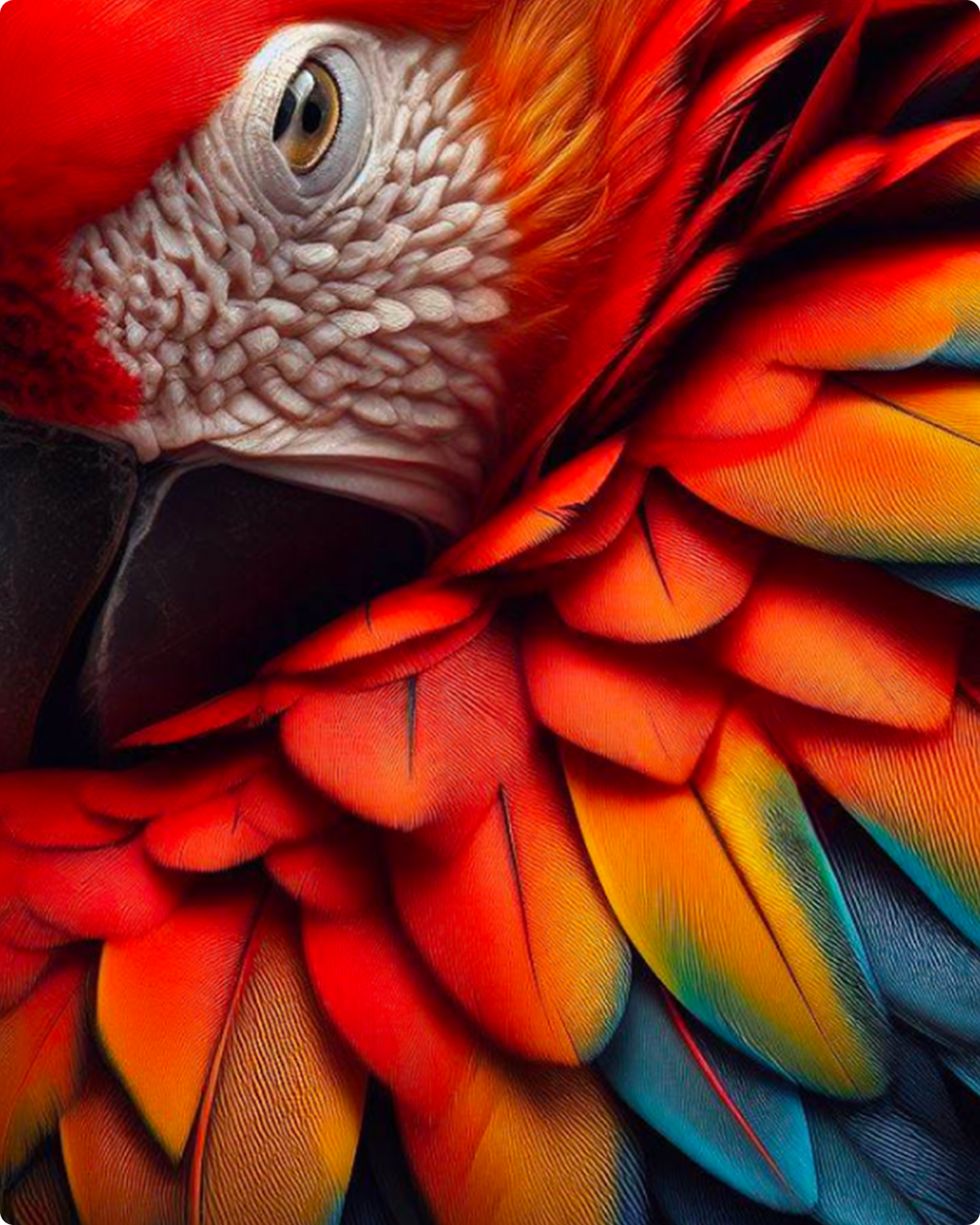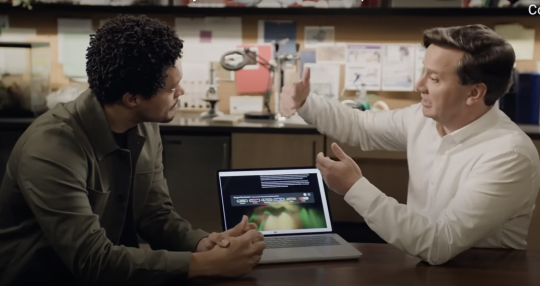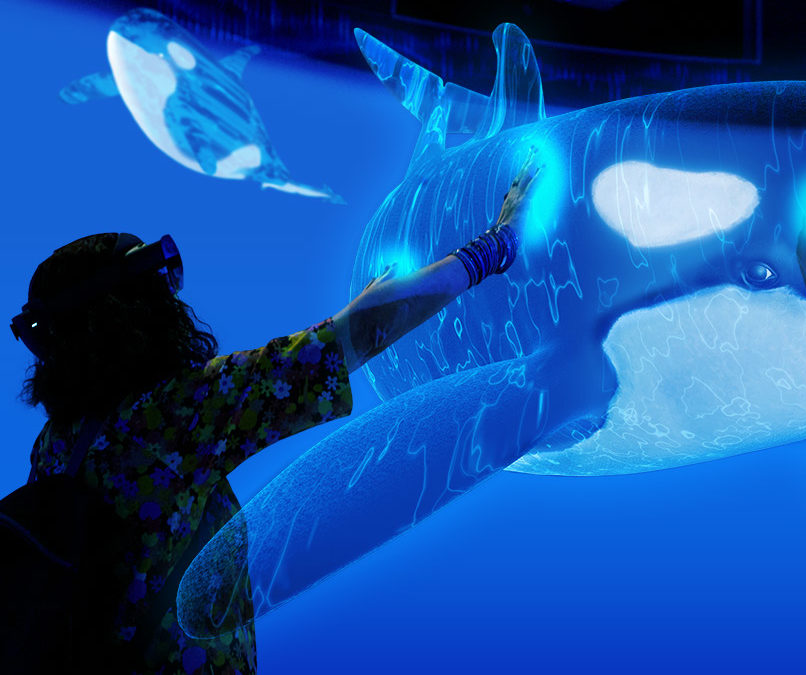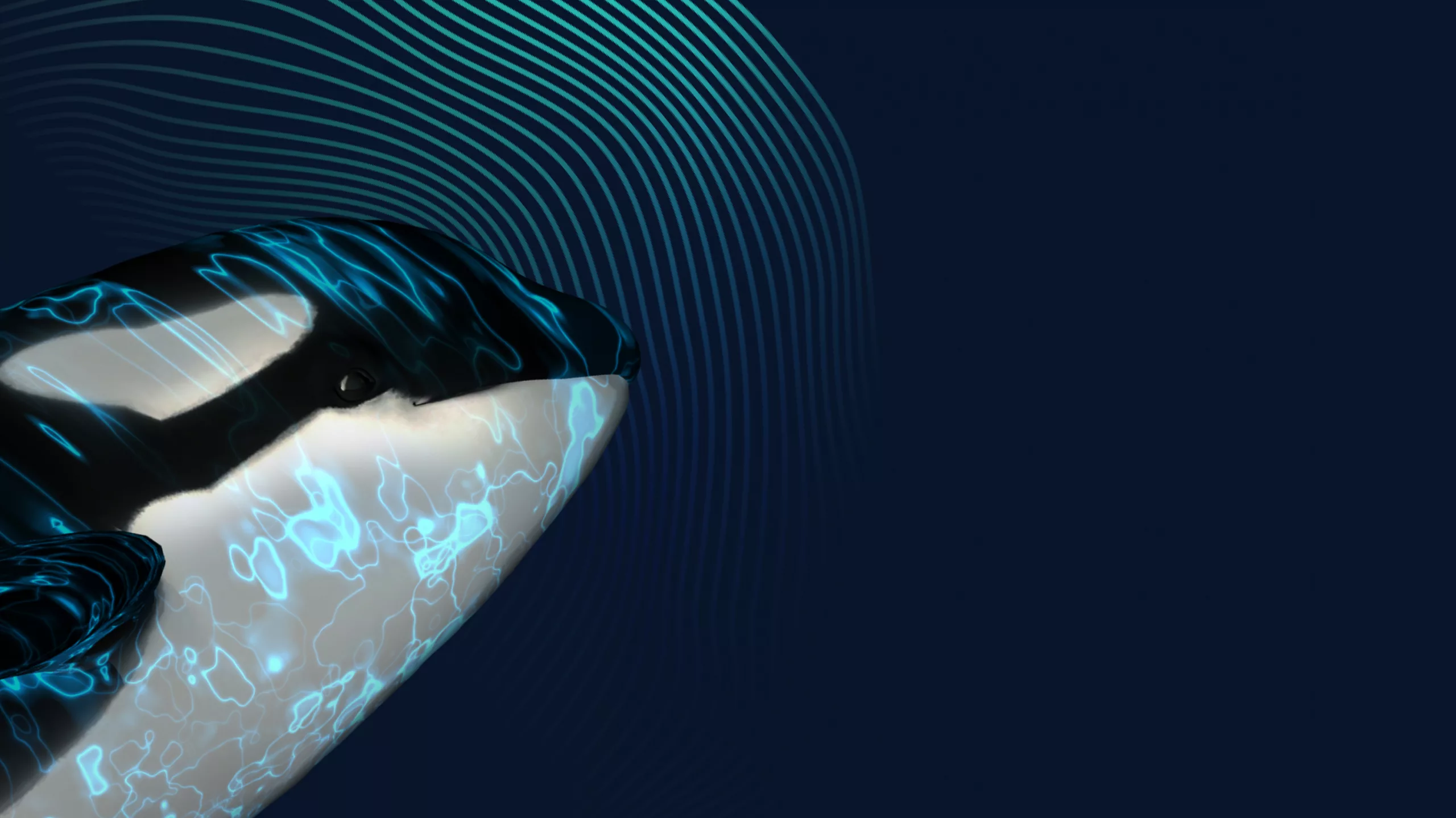The heartbeat of our planet
In the heart of South America lies the Amazon Rainforest, a crucial component of the Earth’s ecological balance. Spanning across nine countries and covering over 5.5 million square kilometers, the Amazon is not just a geographical marvel—it’s a critical indicator of the planet’s health.
Imagine a vast green canvas pulsating with life, where each leaf and rivulet plays its part in a global climate symphony. Here, the Amazon is not just a rainforest; it’s a dynamic character in our Earth’s story. Its dense jungles and sprawling rivers are lifelines that weave through the narrative of our planet, influencing weather patterns and ecosystems across continents.
This vast rainforest, home to an estimated 10% of the world’s known species, is a testament to the delicate interplay of life. From the stealthy jaguar to the flamboyant macaw, each species plays a significant role in maintaining the ecological equilibrium. The health of these species reflects the broader health of our planet, illustrating the intricate connection between local ecosystems and global environmental well-being.
But the Amazon is at a critical crossroads, shadowed by significant challenges. Recent data from Brazil’s National Space Research Institute, INPE, show a decline in deforestation, with forest clearing in Brazil’s Amazon decreasing by 66% in August 2023 compared to the same month the previous year. Despite this recent decrease, the Brazilian Amazon has lost nearly 20% of its forest cover since the early 1970s. Scientists warn that continued deforestation, alongside forest degradation and climate change, could transform large rainforest areas into a drier, savanna-like ecosystem, severely affecting carbon storage, biodiversity, rainfall patterns, and local communities 1 . Its preservation is more than saving a rainforest; it is about safeguarding the future of our global environment.
The art of bioacoustics lies in converting nature’s sound into scientific evidence.
Bioacoustics and the art of listening to nature’s symphony
Deep within the Amazon, microphones (sometimes as small as a pea or button), capture chirps, growls, and rustles—unveiling previously hidden narratives of wildlife. Welcome to bioacoustics, a scientific field that merges biology with acoustics. It involves analyzing and interpreting the sounds made by and affecting living organisms, effectively turning the forest’s symphony into a dataset rich with ecological insights.
Microphones, with their minimal invasiveness, are transformative in bioacoustics. Their ability to silently observe nature without disturbance captures its essence in a way active human presence cannot. Efficient and cost-effective, these devices allow for extensive, unobtrusive monitoring across the vast expanses of the rainforest. Rahul Dodhia, Deputy Director at Microsoft’s AI for Good Lab, highlights their proficiency in capturing “nature’s subtle nuances,” underscoring the advantage of this passive observation method.
These microphones always listen, providing continuous surveillance that doesn’t disrupt animal behavior, unlike direct human observation, which can be intrusive. Their passive nature ensures that even animals hidden from sight or camouflaged are not missed, as their sounds reveal their presence. This aspect of bioacoustics enhances data accuracy and allows researchers to focus on analysis and other critical tasks as the microphones and AI handle the fieldwork. By being passive listeners, bioacoustic devices are redefining wildlife monitoring, ensuring that no whisper of the rainforest goes unnoticed.
Bioacoustics serves as a gateway to an unseen universe. From the delicate whisper of insects to the vibrant calls of the Howler Monkey, each sound is a puzzle piece in the ecological narrative. Listening beyond just recording noises, this field focuses on understanding the concert of life — how animals communicate, interact, and live in their natural habitat.
Sound matching for species identification
A joint effort between AI for Good and Azure Cognitive Services has equipped researchers with the right tools to identify specific animal calls amidst the rich tapestry of sounds in the Amazon, a crucial step in monitoring biodiversity and unraveling ecological interactions.
In addition to mapping the acoustic landscape, bioacoustics is instrumental in identifying bioindicators—species that signal an ecosystem’s health. Andres Celis, a Microsoft researcher in Artificial Intelligence, sheds light on their importance: “Key species identified through bioacoustics reveal a forest’s health. Their presence or absence indicates the ecosystem’s condition, whether thriving or in distress.” Bioindicators are vital in detecting environmental changes, measuring habitat health, and guiding conservation efforts. They pinpoint areas needing intervention and track the success of restoration projects, playing a crucial role in maintaining the Amazon’s ecological balance.
In employing these advanced techniques, bioacoustics does more than uncover the hidden narratives within the Amazon. It lays the groundwork for groundbreaking conservation strategies. Through this scientific lens, preserving one of Earth’s most diverse and vibrant ecosystems becomes a story of discovery, hope, and innovation.
Image carousel
AI’s pioneering role in redefining conservation
As AI ushers in a new era in bioacoustics, it’s transforming conservation and research into a more efficient process. AI is a vital assistant to scientists, sifting through data to identify various animals. This technology enables researchers to focus on in-depth analysis and critical conservation tasks by handling the routine aspects of data review.
Zhongqi Miao, AI for Good Lab’s lead bioacoustics research scientist, sheds light on this advancement: “By converting sounds from nature into measurable data, AI helps monitor wildlife populations and track changes in ecosystems.” This approach is not just about technology; it’s about gaining a deeper understanding of wildlife health, migratory patterns, and behavioral intricacies.
AI has allowed for making data interpretation faster, leading to real-time understanding. 3
AI and the sound of innovation
Project Guacamaya is leveraging AI to identify bird and non-bird sounds within the Amazon with remarkable accuracy, analyzing over 100,000 sounds and achieving more than 80% reliability in species identification. It’s broadening the scope of ecological monitoring, covering vast regions of the Amazon simultaneously and transforming the speed of data analysis. Tasks that once took years of manual labor can now be completed in mere hours.
One of the most compelling advantages of AI in this domain is its capacity for real-time data analysis. As AI instantaneously processes the myriad sounds of the Amazon, it empowers researchers and conservationists to respond immediately to environmental changes, offering a beacon of hope to address ecological shifts before they become irreversible.
But AI’s role in wildlife monitoring goes beyond data crunching, extending to the continuous recording and analysis of sounds in natural habitats. Operating like a skilled conductor, AI interprets the layered sounds of the Amazon in real time, discerning individual animal calls amidst the forest’s cacophony. Its keen ‘ear’ recognizes anomalies in the rainforest’s symphony, such as unusual patterns in frog choruses or uncharacteristic quiet in usually bustling areas, which may serve as signals of potential ecological changes.
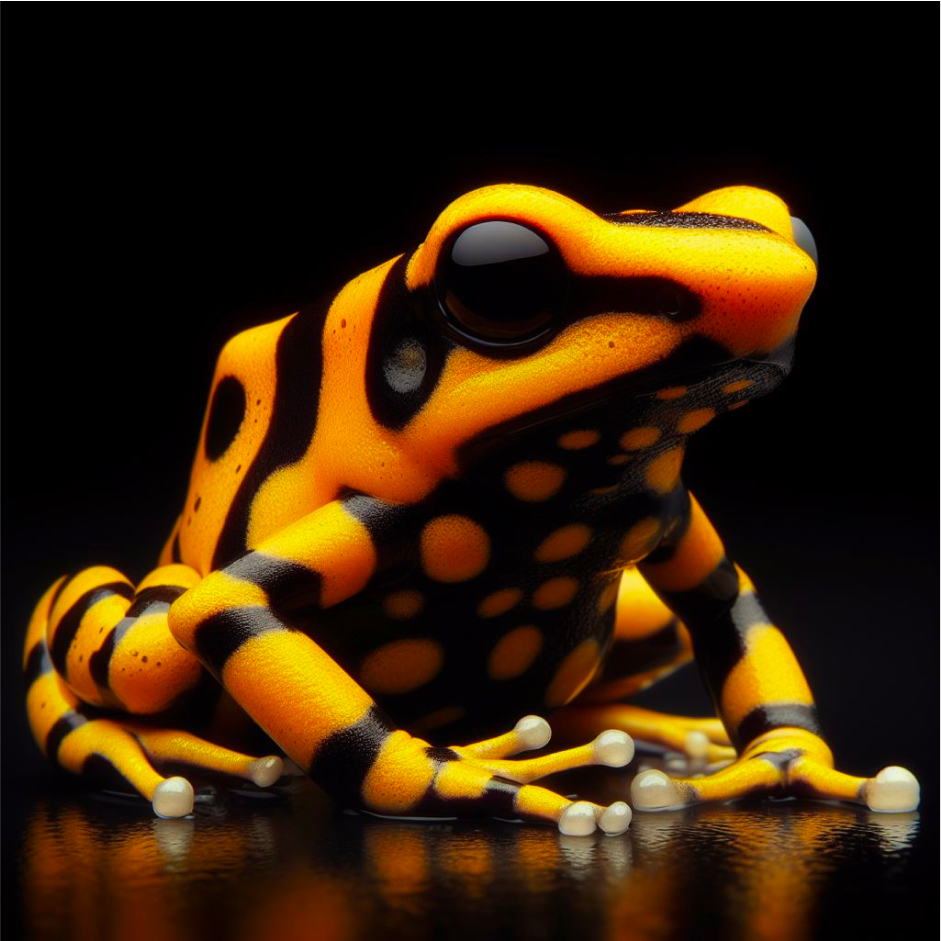
Frogs can be surprisingly loud for their small size. Some can reach up to 80-90 decibels, which is about as loud as a lawn mower or a passing diesel truck.
Cicadas are well known for having one of the loudest and most distinctive insect-produced sounds. A disruption in their typical call patterns can alert scientists to a change in the ecosystem.
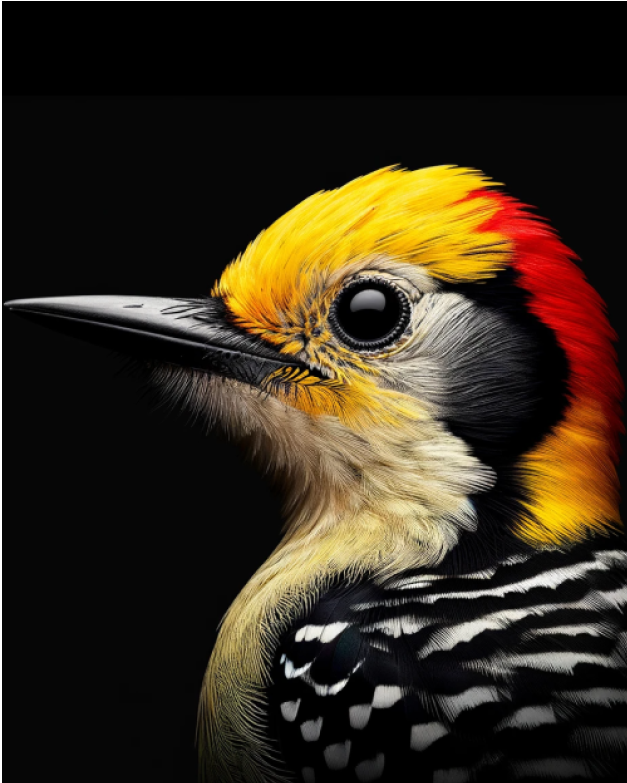
The woodpecker in the Amazon uses drumming on trees to communicate, mark its territory, attract mates, and send messages to other woodpeckers. They also use calls and chirps to talk to each other over shorter distances.
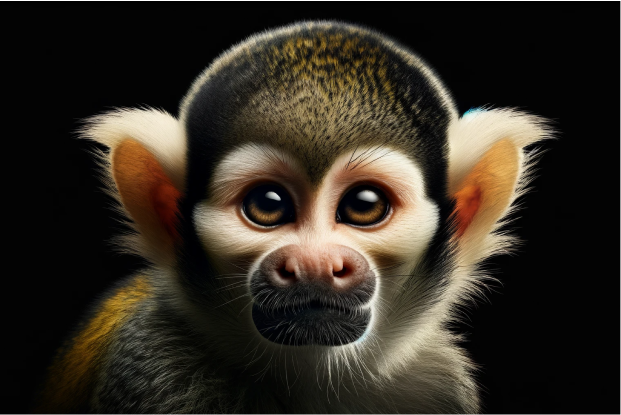
Monkeys communicate with various sounds, from loud calls echoing through their habitats to softer, intimate communications. These vocalizations are crucial for expressing emotions, signaling danger, and maintaining social dynamics.
AI and a partnership for the planet
AI’s role in bioacoustics signifies a leap forward, extending its impact from the lab to the broader world, aiding communities and ecosystems. The shift towards open-source AI models underscores a collaborative spirit in conservation, making advanced technology accessible for vital areas like the Amazon. This global approach, supported by Microsoft’s technology, empowers scientists and researchers worldwide, uniting them to protect our natural heritage.
Through Microsoft’s support with adaptable and scalable AI models, researchers in countries like Ecuador and Peru are better equipped to address environmental challenges 2 . This collaborative effort bolsters the preservation of the Amazon, aligning diverse conservation strategies against the ecosystem’s threats.
In bioacoustics, AI is more than a technical tool; it enables broader understanding and action. It transforms complex ecological data into insights that resonate with the public, fostering awareness and support for Amazon conservation. This technology doesn’t just process data; it connects people with conservation efforts, highlighting the Amazon’s crucial role in our global environment.
Harmonizing AI with the Amazon’s echoes
In the future, the Amazon Rainforest will become a canvas for a groundbreaking dialogue between researchers and AI. Envision a world where interacting with an AI model unlocks instant insights into the complex chorus of the rainforest. A researcher might inquire about a specific bird call and, like magic, receive detailed information about its species, behaviors, and ecological significance. This isn’t science fiction; it’s a vision in progress by the AI For Good team, a testament to the leaps in bioacoustic research.
The role of generative AI and advanced language models in this narrative is transformative. They’re set to revolutionize our comprehension of natural soundscapes, offering new ways to interpret and interact with the language of the forest.
Citizen science
The narrative of bioacoustics extends to citizen science, where technology bridges the gap between everyday life and environmental stewardship. With smartphones and AI, like Microsoft’s AI for Earth program featuring initiatives like Wild Me, individuals globally can contribute to ecological monitoring. Simple acts, like recording a bird call during a walk, feed into a vast database scientists use for research. This citizen-driven effort, bolstered by Microsoft’s technology, supports tracking wildlife patterns and detecting environmental changes, making every person a key participant in global conservation.
Looking ahead, the synergy between AI and our natural world isn’t just inspiring; it’s a critical step toward a sustainable future. This narrative, where technology becomes nature’s ally, reminds us that every contribution counts in protecting and understanding the Earth. Every voice is part of a larger melody, from the tiniest insect in the Amazon to a global community of citizen scientists.
In the rhythms of the rainforest, a shared melody emerges, calling us to listen, learn, and act. This is more than conservation; it’s a collective journey to preserve the extraordinary planet we call home, where technology and nature intertwine.
References
- Mongabay. (2023, September). Deforestation in the Amazon rainforest continues to plunge. Retrieved from https://news.mongabay.com/2023/09/deforestation-in-the-amazon-rainforest-continues-to-plunge/
- Microsoft News. (n.d.). AI may hold a key to the preservation of the Amazon rainforest. Retrieved from https://news.microsoft.com/source/latam/features/ai/amazon-ai-rainforest-deforestation/?lang=en
- Dodhia, R. (2024). AI for Good: Pursuit of Scientific Knowledge. In AI for Social Good: Using Artificial Intelligence to Save the World (1st ed., p. 121). Wiley
Animal sounds used in the interactive player for this article were licensed from third party sources and used for demonstration purposes only. The audio files are meant to replicate and illustrate audio capture from bioacoustic research.
Finding answers about rainforest preservation
Trevor and Juan Lavista Ferres, Corporate VP, Chief Data Scientist, and Director of the AI for Good Lab, Microsoft, discuss how AI is helping experts identify the sounds of the rainforest to better understand changes in our ecosystem. Project Guacamaya is using AI to analyze over 100,000 frequencies within the Amazon for species identification and ecological monitoring. The preservation of the Amazon Rainforest will help safeguard our global environment.
